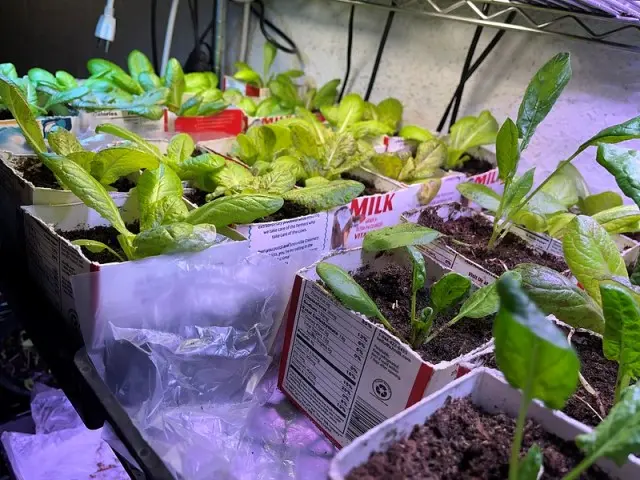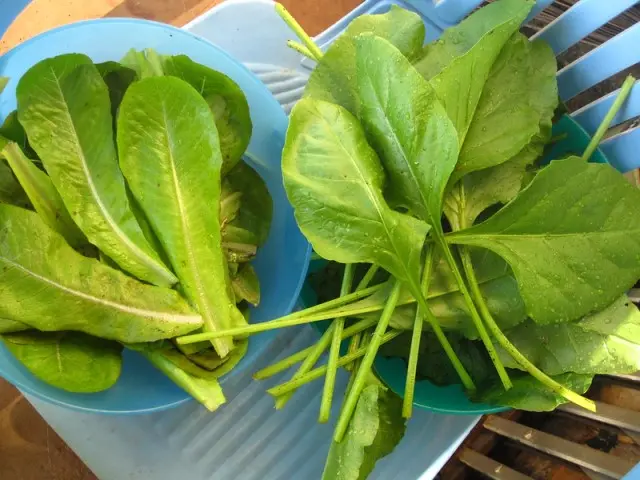Spinach, with its vibrant green leaves and nutrient-packed profile, is a versatile and healthful addition to any diet. While it’s commonly associated with outdoor gardens, cultivating spinach indoors is a rewarding and feasible endeavor. Whether you’re an urban dweller with limited outdoor space or simply want to enjoy fresh, homegrown greens year-round, growing spinach indoors offers a convenient solution. In this article, we’ll explore practical tips to help you successfully nurture this leafy green within the comfort of your home.

1. Choose the Right Variety
Selecting the right variety of spinach is crucial for successful indoor cultivation. Some spinach varieties are more compact and better suited for containers, making them ideal for indoor gardening. Look for varieties like Baby Leaf, Space, or Melody, which are known for their adaptability to container gardening and can thrive in confined spaces.
2. Select an Appropriate Container
When growing spinach indoors, the choice of container is essential. Opt for containers with good drainage to prevent waterlogged soil, which can lead to root rot. A container with a depth of at least 6 inches is suitable for spinach, allowing the roots to spread and the plant to thrive. Additionally, choose containers with a wide surface area to accommodate the spread of the spinach leaves.
3. Use Quality Soil Mix
Spinach prefers well-draining soil with a slightly acidic to neutral pH range. A high-quality potting mix enriched with organic matter, such as compost or well-rotted manure, provides the necessary nutrients for healthy spinach growth. Avoid compacted or heavy soils that hinder root development.

4. Provide Adequate Light
One of the most critical factors for successful indoor spinach cultivation is adequate light. Spinach requires at least 4-6 hours of direct sunlight daily. If you don’t have access to natural sunlight, supplement with artificial lighting using fluorescent or LED grow lights. Place the lights close to the plants, maintaining a distance of 6-12 inches above the foliage, to ensure they receive the intensity of light needed for optimal growth.
5. Maintain Consistent Temperature and Humidity
Spinach thrives in cool temperatures, ideally between 50°F to 70°F (10°C to 21°C). Ensure a consistent temperature range to promote healthy growth. Additionally, maintain moderate humidity levels, as spinach prefers a slightly humid environment. If your indoor space tends to be dry, consider placing a tray filled with water near the plants or using a humidifier.
6. Watering Wisely
Proper watering is crucial for spinach cultivation. Keep the soil consistently moist, but not waterlogged. Overwatering can lead to root rot, while underwatering can cause the leaves to wilt and compromise the plant’s health. Water the plants at the base to avoid wetting the foliage, as this reduces the risk of fungal diseases. Use a watering can with a fine nozzle for precise and gentle watering.
7. Fertilize Regularly
To ensure robust growth and a continuous harvest, fertilize your indoor spinach plants regularly. Use a balanced, water-soluble fertilizer and follow the package instructions for application. During the growing season, typically spring and fall, fertilize every 2-3 weeks. However, be cautious not to over-fertilize, as this can lead to excessive foliage growth at the expense of leaf production.

8. Harvest Correctly
Harvesting spinach at the right time is crucial for flavor and nutritional content. Begin harvesting when the outer leaves reach a desirable size, typically around 4-6 inches in length. Use clean scissors or shears to cut the leaves at the base, allowing the inner leaves to continue growing. Regular harvesting encourages new growth and prolongs the harvest period.
Conclusion
Growing spinach indoors is a rewarding experience that allows you to enjoy fresh, homegrown greens regardless of your living situation. By following these tips on selecting the right variety, choosing suitable containers, providing adequate light, maintaining optimal temperature and humidity, watering wisely, fertilizing regularly, and harvesting correctly, you can cultivate a thriving indoor spinach garden. Embrace the joy of nurturing your spinach from seed to plate, and relish the benefits of this nutritious and delicious leafy green throughout the year.
MORE POSTS:
